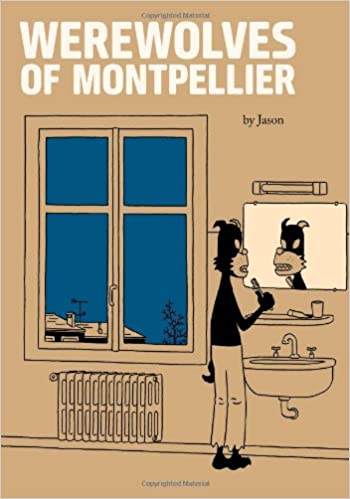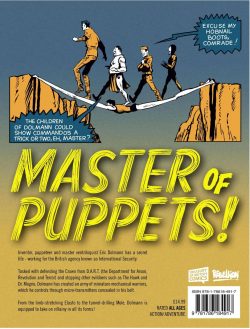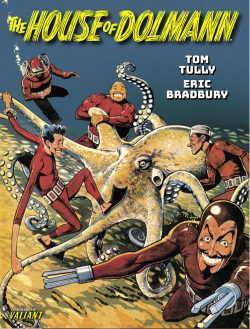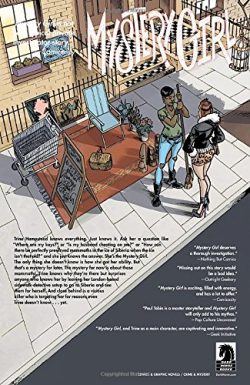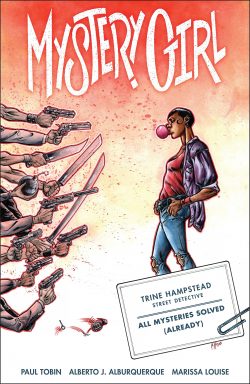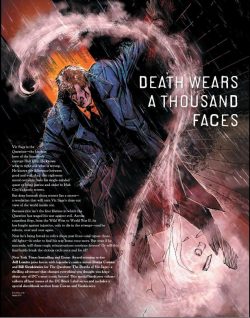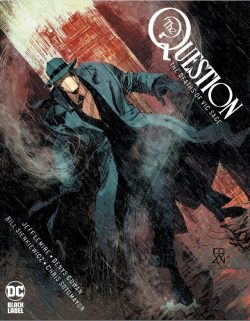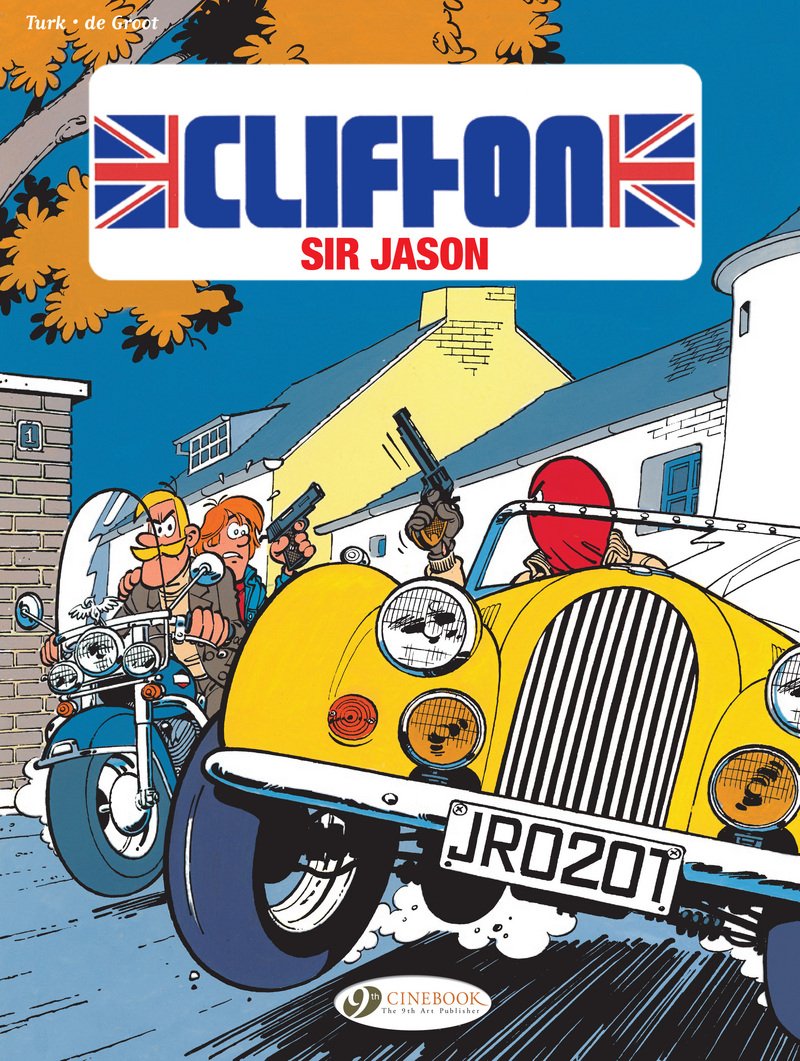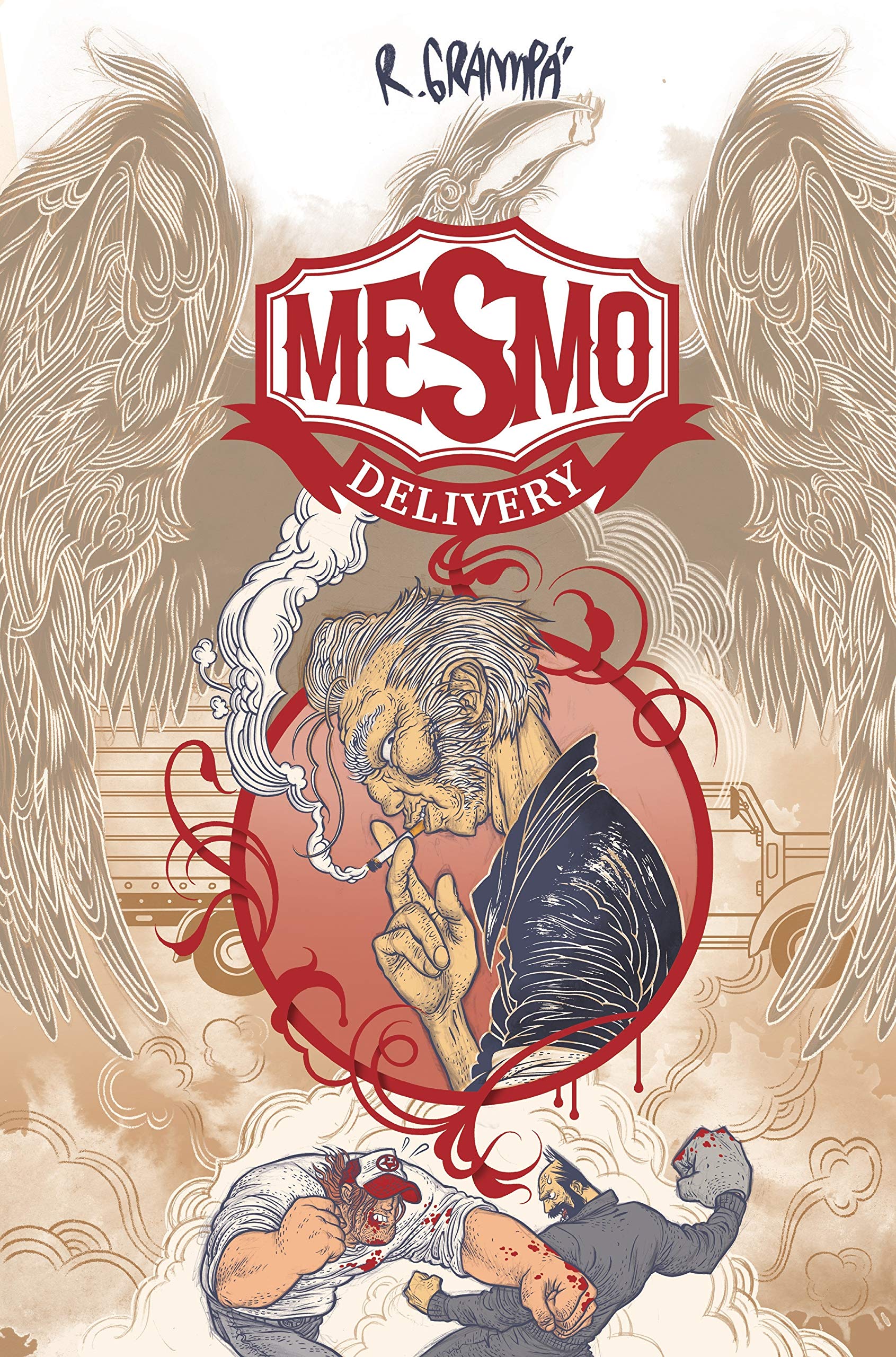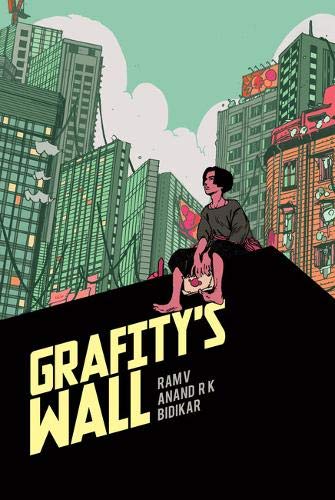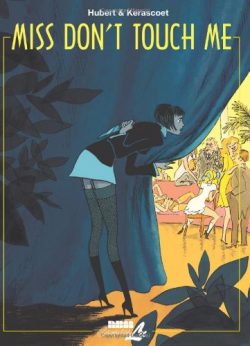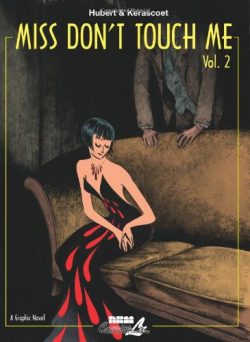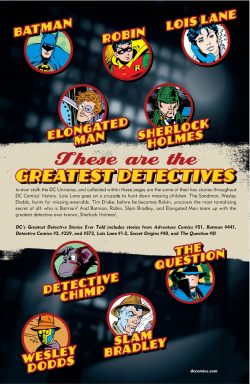
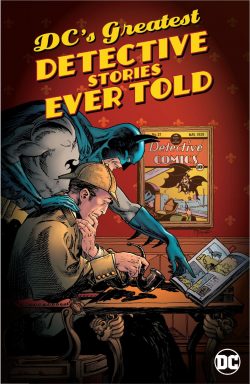
By Jerry Siegel & Joe Shuster, Gardner F. Fox, Mindy Newell, Mike W. Barr, Denny O’Neil, Andy Helfer, Rusty Wells, Creig Flessell, Carmine Infantino, Alan Davis, Paul Neary, Terry Beatty & Dick Giordano, Al Vey, E.R. Cruz, Denys Cowan & Rick Magyar, Mark Badger, Jim Aparo & Mike DeCarlo & various (DC Comics)
ISBN: 978-1-7795-0594-1 (TPB/Digital edition)
Fundamental and definitive aspects of “detective stories” have been attributed to the Bible, ancient Greek dramas, One Thousand and One Nights and similarly compelling classical texts from China, India and other places, but the true genre of crime and mystery fiction really began with cheap printing and the rise of mass entertainment culture.
Detective stories are a subgenre wherein an investigation – by amateur or professional (active or retired) – into a legal felony or moral/social injustice. Like exploration/adventuring, fantasy, horror and science fiction, Detective Stories blossomed in white western societies in the mid-19th century: spreading from prose books and magazines to other entertainment media like plays and films, with early stars including C. Auguste Dupin, Sherlock Holmes, Jules Maigret, Father Brown, Lord Peter Wimsey, Sexton Blake and Hercule Poirot. Tales aimed at youngsters generated their own sleuthing stars: Nancy Drew, The Hardy Boys and more
As comic strips developed, they also spawned detective champions like Hawkshaw, Dick Tracy, Charlie Chan, Kerry Drake ad infinitum: all contributing to a tidal wave of pulp fiction crimebusters that inspired true literary legends – Philip Marlow, Sam Spade, Simon Templar, Mike Hammer and so on…
Detective Comics #1 had a March 1937 cover-date and was the third and final anthology title devised by luckless pioneer Major Malcolm Wheeler-Nicholson. In 1935, the entrepreneur had seen the potential in Max Gaines’ new invention – the comic book – and reacted quickly, conceiving and releasing packages of all-new strips in New Fun: The Big Comic Magazine and its follow-up New Fun/New Adventure (which ultimately became Adventure Comics) under the banner of National Allied Publications.
These publications differed from similar prototype comics magazines which simply reprinted edited collations of established newspaper strips. However, these vanguard titles were as varied and undirected in content as any newspaper funnies page.
Detective Comics was different. Specialising solely in tales of crime and crimebusters, the initial roster included (amongst others) adventurer Speed Saunders, Cosmo, the Phantom of Disguise, Gumshoe Gus and two series by a couple of kids from Cleveland named Siegel & Shuster: espionage agent Bart Regan and two-fisted shamus Slam Bradley…
Within two years the commercially unseasoned Wheeler-Nicholson had been forced out by his more adept business partners, and eventually his company grew into monolithic DC (for Detective Comics) Comics. Surviving a myriad of changes and temporary shifts of identity and aims, it’s still with us – albeit primarily as a vehicle for the breakthrough character who debuted in #27 (May 1939)…
Celebrating that quintessential connection and affiliation to the form, this slim tome gathers an unconventional array of sleuths and problem solvers, many not native to the parent title, but all offering a heady taste of what made the title great. Re-presenting material from Adventure Comics #51; Batman #441; Detective Comics #2, 329 & 572; Lois Lane #1-2; Secret Origins #40 and The Question #8 it spans August 1937 to November 1989: an epic package chronologically sampling the company’s connection and debt to the genre that truly started their ball rolling…’’
Sans preamble, we dive straight into action with early star Slam Bradley in his second ever case. ‘Skyscrapers of Death’ originated in the April 1937 cover-dated Detective Comics #2, (by Jerry – back when he still called himself “Jerome” – Siegel & Joe Shuster). It reveals how the abrasive, two-fisted gumshoe is framed for murder by a crooked Union boss. Slam and his assistant Shorty were a big draw in those early days: revelling in all the raw action and spectacle that would fire up his younger cousin Superman. The Bradley strip ran until October 1949, finally closing shop in Detective Comics #152.
Next up is quintessential pulp sleuth The Sandman who premiered in either Adventure Comics #40 July 1939 (two months after Batman debuted in Detective Comics #27) or two weeks earlier than that in New York World’s Fair Comics 1939, depending on which distribution records you choose to believe.
He was created and originally illustrated and scripted by multi-talented all-rounder Bert Christman, with assistance from Gardner F. Fox. Head utterly obscured by a gas-mask and slouch hat; caped, business-suited millionaire adventurer Wesley Dodds is a rugged playboy scientist cut from the radio drama/prose periodical mystery-men mould of The Shadow, Phantom Detective, Green Hornet, Lone Ranger, Spider, Avenger and so many more: all household names of early mass-entertainment.
Wielding a sleeping-gas gun and haunting the night hunting killers, thieves and spies, he was soon joined by plucky paramour Dian Belmont, before gradually losing readers’ interest and slipping from cover-spot to last feature in Adventure, just as the shadowy, morally ambiguous avengers he emulated also slipped from popularity in favour of gaudily clad glory-boys…
Alternately titled ‘The Pawn Broker’ in previous reprints, ‘The Van Leew Emeralds’ comes from Adventure Comics #51 (June 1940 by Fox & Creig Flessel): a fascinating mystery romp for the romantically-inclined crimebusters to solve in fine style and double-quick time…
In 1963 Julius Schwartz took editorial control of Batman and Detective Comics and finally found a home for a character who had been lying mostly fallow ever since his debut as a walk-on in The Flash #112 (April/May 1960). The Elongated Man was Ralph Dibny: a circus-performer who discovered an additive in soft drink Gingold which granted certain people increased muscular flexibility. Intrigued, he refined the chemical until he had a serum bestowing ability to stretch, bend and compress his body to an incredible degree. Then Ralph had to decide how to use his new powers…
Designed as a modern take on Jack Cole’s immensely popular Golden Age star Plastic Man, Dibny became a regular guest star/colleague for the Scarlet Speedster. He married vivacious debutante Sue Dibny and joined Flash’s battles against aliens and supervillains, but when the back-up spot opened in Detective Comics (previously held by Martian Manhunter since 1955 and only vacated because J’onn J’onzz was promoted to lead position in House of Mystery) Schwartz had Dibny slightly reconfigured as a flamboyant, fame-hungry, attention-seeking, brilliantly canny globe-trotting private eye solving mysteries for the sheer fun of it.
Aided by his equally smart but thoroughly grounded wife, the short tales were patterned on classic Thin Man filmic adventures of Nick and Norah Charles: blending clever, apparently impossible crimes and events with slick sleuthing, all garnished with the outré permutations and frantic physical antics first perfected by Cole…
Drenched in fanciful charm and sly dry wit, the complex yet uncomplicated sorties began in Detective #327 (May 1964) running until #371 (cover-dated January 1968). Crafted by Fox & Infantino – who inked himself in early episodes – this third outing has them heading for cowboy country to unravel the ‘Puzzle of the Purple Pony!’ (Detective Comics #329) by inadvertently playing cupid for a young couple hunting a gold mine before capturing a gang of murderous bandits with money and murder in mind.
Next up is a rare, completely serious outing for the oldest female lead in superhero comics. Although her role varied from patsy to comedy stooge, from jester to romantic ideal to eye-candy as the situation warranted, Lois Lane was always an investigative whirlwind.
Here in the dying moments of the pre-Crisis on Infinite Earths continuity, scripter Mindy Newell & artist Gray Morrow found their 4-issue miniseries scrunched into two double-length issues (August-September 1986,with that notorious “Superman’s Girl Friend…” strap line thankfully dropped) as Lois Lane #1-2, scrupulously, meticulously, obsessively, and ultimately unsuccessfully tried to bring a national crisis in missing children to the public’s attention in ‘When it Rains, God is Crying’.
Devoid of superhero involvement, the regular Superman cast are drawn into a polemical story exposing the extent of child abduction, the repercussions of recovering victims – dead or otherwise – and official responses in ‘Ignorance Was Bliss’, ‘Dark Realities’, ‘Quicksand’ and ‘Bless the Child’ after Lois becomes increasingly driven to solve the mystery of an unidentified child found dead in Metropolis. Refusing to accept the horrific toll of disappearances she uncovers, the traumatised reporter puts her life and career on the line to find answers nobody seems willing to hear…
From painful reality we fold back into fantastic fantasy as anniversary issue Detective Comics #572 (March 1987) unites Batman, second Robin Jason Todd, Elongated Man, Slam Bradley and Sherlock Holmes in a hunt for ‘The Doomsday Book’, courtesy of scripter by Mike W, Barr, Alan Davis & Paul Neary, Terry Beatty & Dick Giordano, Infantino & Al Vey & ER Cruz.
The story begins with the descendent of infamous Professor Moriarty enacting a century old scheme, countered by each hero in a solo turn before all leads connect them to a certain British castle and a manic climactic confrontation…
In the gritty post-Crisis reality, Denny O’Neil, Denys Cowan & Rick Magyar retooled Steve Ditko’s ultimate lone agent of justice into a philosophical force of nature, relentless in his pursuit of answers.
An ordinary man pushed to the edge by his obsessions, Vic Sage used his fists and a mask that makes him look faceless to secure truth and justice whenever normal journalistic methods failed. Here the remorseless Question prowls Hub City hunting the ‘Mikado’ (The Question #8, September 1987): a good man driven by the daily horrors of the city to take action, against villains and hypocrites, making his punishments fit the crime…
In the years when superheroes were in retreat and considered too foolish for readers. DC launched Rex the Wonder Dog, who solved crimes, fought dinosaurs and saved the world. In issue 4 (July/August 1952), a back-up feature launched. Written by John Broome, Bobo was Detective Chimp: a Florida-based stalwart who was assistant and deputy to the local sheriff. He cracked many cases and was extremely popular among certain types of fan. He remains so and in Secret Origins #40 (May 1989) finally enjoyed ‘The Origin of Detective Chimp’ thanks to Mark Badger Andy Helfer & Rusty Wells. Madcap and hilarious, it’s a wild ride but has been superseded in later years by other, more quasi rational tales. Nevertheless, an ape solving crimes is a sure-fire winner as many other hirsute DC gumshoes could attest…
This eclectic selection closes with the middle chapter of a landmark crossover tale. Crafted by Marv Wolfman, Jim Aparo & Mike DeCarlo, ‘Parallel Line’ comes from Batman #441 (November 1989) the third chapter of the Batman: A Lonely Place of Dying arc introducing third Robin Tim Drake.
After original Robin Dick Grayson’s departure, the Dark Knight worked solo until he caught a streetwise urchin stealing the Batmobile’s tires. This lost boy was Jason Todd, whose short but stellar career as the Boy Wonder was fatally tainted by his impetuosity, tragic links to one of the hero’s most unpredictable foes and shocking death. The trauma of losing his comrade forced Batman to re-examine his own origins and methods, becoming darker still..
After a period of increasingly undisciplined encounters Batman was on the edge of losing not just his focus but also his ethics and life: seemingly suicidal on frequent forays into the night. Interventions from his few friends and associates had proved ineffectual. Something drastic had to happen if the Dark Knight was to be salvaged.
Luckily there was an opening for a sidekick…
The crossover tale originally appeared in Batman #440-442 and New Teen Titans #60-61 (all plotted by Wolfman & George Pérez) and a new character entered the lives of the extended Batman Family; a remarkable child who would reshape the DC Universe.
‘Parallel Lines’ unravels the enigma of Tim Drake, who as a toddler was in the audience the night the Flying Graysons were murdered. Tim was an infant prodigy, and when, some months later he saw new hero Robin perform the same acrobatic stunts as Dick Grayson, he instantly deduced who the Boy Wonder was – and by extrapolation, the identity of Batman.
A passionate fan, Drake followed the Dynamic Duo’s exploits for a decade: noting every case and detail. He knew when Jason became Robin and was moved to act when his death triggered Batman’s increasing instability. Taking it upon himself to fix his broken heroes, Tim tried to convince the “retired” Grayson to became Robin once more – but fate had other plans…
Eccentrically engaging, these tales are the merest hint of the wonders locked in DC’s vaults of fun and wonder. Hopefully, it’s also simply the start of a long and vibrant caseload of recovered mysteries
© 1937, 1940, 1964, 1986, 1987, 1989, 2020 DC Comics. All Rights Reserved.
